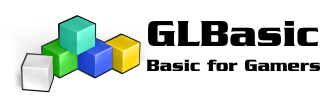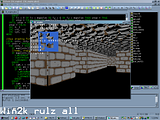Use a image strip(series of images in one vertical or horizontal tile) to create a VOX file(a raw 3d voxel model) which can be converted in Slab6 to be used with build engine or whatever else.
Also exports a DDD file, glbasic model file and a OBJ w/ MTL files for use in other projects.
This is just a beta, so the OBJ doesn't have proper normals defined, nor is it optimized much.
It also creates a MTL file with the object which includes all the color info.
As a simple test, I ran a 16x16x3 strip, opened the obj in Anim8tor, export it as a 3ds, and then used poly2vox to convert it into a voxel again. Its not worth the effort though as poly2vox creates some garbage pixels even if the models is made of cubes. Still, a fun test, and the color data was retained in the 3ds.
However, my next step before I start to optimize the model building is to allow you to reverse a VOX file into a model.
The normal issue seems to be simple, and I just kind of threw empty ones in for now, just will take some tweaking.
Also exports a DDD file, glbasic model file and a OBJ w/ MTL files for use in other projects.
This is just a beta, so the OBJ doesn't have proper normals defined, nor is it optimized much.
It also creates a MTL file with the object which includes all the color info.
As a simple test, I ran a 16x16x3 strip, opened the obj in Anim8tor, export it as a 3ds, and then used poly2vox to convert it into a voxel again. Its not worth the effort though as poly2vox creates some garbage pixels even if the models is made of cubes. Still, a fun test, and the color data was retained in the 3ds.
However, my next step before I start to optimize the model building is to allow you to reverse a VOX file into a model.
The normal issue seems to be simple, and I just kind of threw empty ones in for now, just will take some tweaking.





